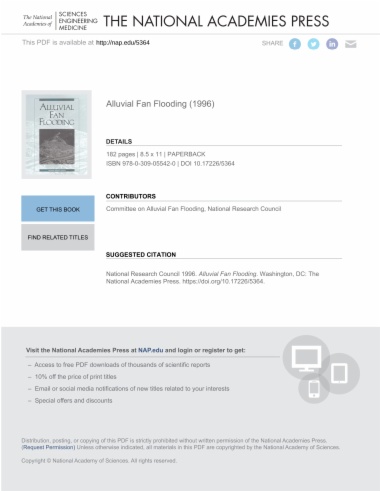

Alluvial fans are gently sloping, fan-shaped landforms common at the base of mountain ranges in arid and semiarid regions such as the American West. Floods on alluvial fans, although characterized by relatively shallow depths, strike with little if any warning, can travel at extremely high velocities, and can carry a tremendous amount of sediment and debris. Such flooding presents unique problems to federal and state planners in terms of quantifying flood hazards, predicting the magnitude at which those hazards can be expected at a particular location, and devising reliable mitigation strategies.
Alluvial Fan Flooding attempts to improve our capability to determine whether areas are subject to alluvial fan flooding and provides a practical perspective on how to make such a determination. The book presents criteria for determining whether an area is subject to flooding and provides examples of applying the definition and criteria to real situations in Arizona, California, New Mexico, Utah, and elsewhere. The volume also contains recommendations for the Federal Emergency Management Agency, which is primarily responsible for floodplain mapping, and for state and local decisionmakers involved in flood hazard reduction.